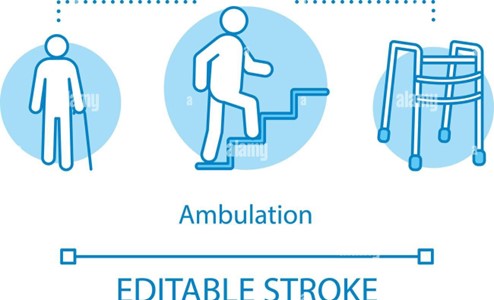A client with a chest tube wishes to ambulate to the bathroom. What is the appropriate nursing response?
'It is unnecessary for you to go to the restroom at this time."
'I can assist you to the bathroom and back to bed."
'I cannot assist you at this time, please wait until I finish what I’m doing”.
'You cannot go to the bathroom.'
The Correct Answer is B
Chest tubes are inserted to drain fluid, blood, or air from the pleural space, which is the space between the lung and the chest wall. It is important to ensure that the chest tube is secured properly and the drainage system is functioning properly before the patient is ambulated. Additionally, the patient may experience discomfort or pain during ambulation, so it is important to assess and manage the patient's pain before and after ambulation.
Option A is not appropriate because it disregards the patient's need to use the restroom and may make the patient feel helpless or dependent.
Option c is not appropriate because it does not address the patient's request for assistance and may make the patient feel neglected or uncared for.
Option d is not appropriate because it is a directive statement that does not take into account the patient's autonomy or individual needs. It is important to involve the patient in the decision-making process and provide appropriate care based on their individual needs and preferences.

Nursing Test Bank
Naxlex Comprehensive Predictor Exams
Related Questions
Correct Answer is B
Explanation
Chest tubes are inserted to drain fluid, blood, or air from the pleural space, which is the space between the lung and the chest wall. It is important to ensure that the chest tube is secured properly and the drainage system is functioning properly before the patient is ambulated. Additionally, the patient may experience discomfort or pain during ambulation, so it is important to assess and manage the patient's pain before and after ambulation.
Option A is not appropriate because it disregards the patient's need to use the restroom and may make the patient feel helpless or dependent.
Option c is not appropriate because it does not address the patient's request for assistance and may make the patient feel neglected or uncared for.
Option d is not appropriate because it is a directive statement that does not take into account the patient's autonomy or individual needs. It is important to involve the patient in the decision-making process and provide appropriate care based on their individual needs and preferences.

Correct Answer is D
Explanation
Explanation: In clients with COPD, the secretions tend to be thick and sticky, which makes it difficult to cough up and clear the airway. To promote respiratory hygiene in this situation, the nurse should recommend increasing fluid intake. Adequate hydration helps to thin the secretions, making them easier to expectorate. The client should aim to drink at least 8-10 glasses of water or other fluids per day unless there is a medical reason not to do so.
Decreasing fluid intake (option a) would make the secretions even thicker and more difficult to clear. Taking Tylenol for secretions (option b) is not a recommended intervention as Tylenol is not indicated for thinning of secretions. Range-of-motion exercises (option c) are important to prevent complications such as pneumonia, but they are not directly related to promoting respiratory hygiene in this situation.
Whether you are a student looking to ace your exams or a practicing nurse seeking to enhance your expertise , our nursing education contents will empower you with the confidence and competence to make a difference in the lives of patients and become a respected leader in the healthcare field.
Visit Naxlex, invest in your future and unlock endless possibilities with our unparalleled nursing education contents today
Report Wrong Answer on the Current Question
Do you disagree with the answer? If yes, what is your expected answer? Explain.
Kindly be descriptive with the issue you are facing.
